Presenting Like Steve Jobs: How To Create Memorable Presentations
This is a summary of what I learnt in a seminar on public speaking and presentation skills called Presenting Like Steve Jobs.
Manuel Sánchez

I attended a seminar on public speaking and presentation skills called Presenting Like Steve Jobs, and the speaker shared some valuable insights on how to create memorable presentations. The speaker was Christian Fremy. I really liked it because I expected some shit about how to make introverted-like people shine or some stuff in that matter.
But not at all. I was wrong.
The three elements of a presentation
After some small introduction in the group, we were shown the following picture in an attempt to understand what are the main elements of the presentation.
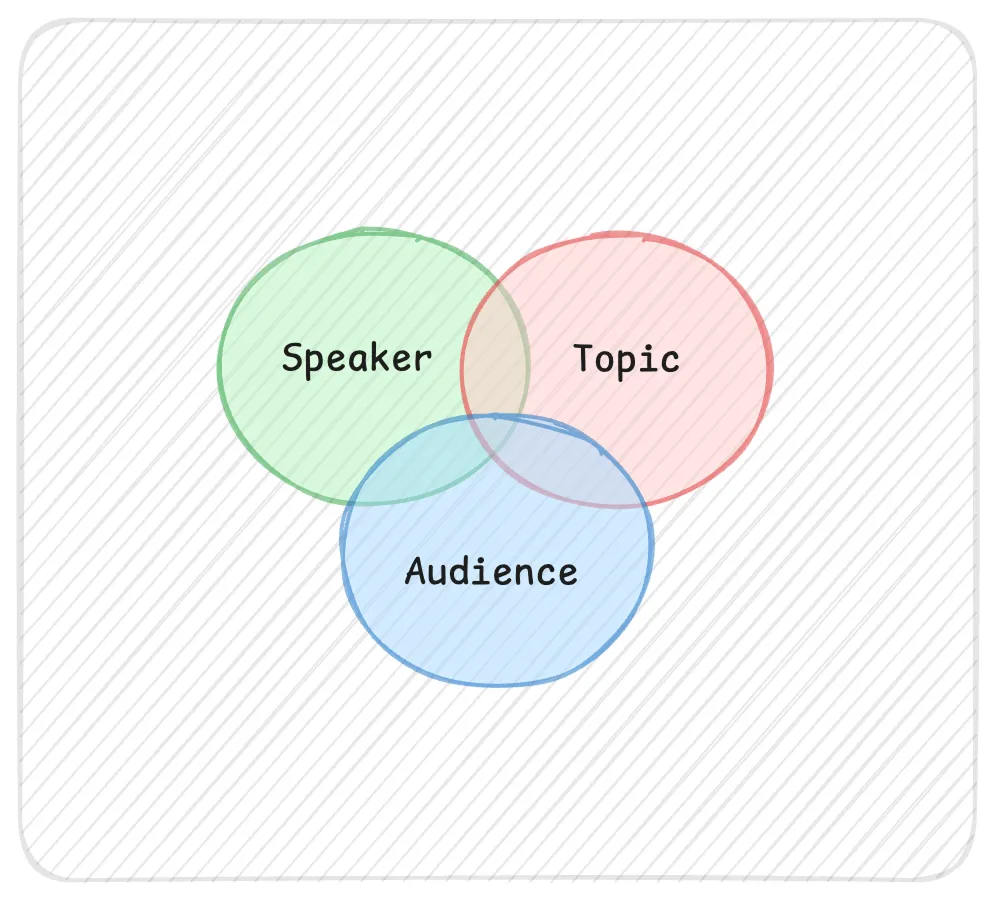
A brief description of each element would be:
-
The speaker: this one does not only bring the words, but also the personality, the own credibility, passion.
-
The topic: is the conceptual core of the presentation—what you’re trying to convey or achieve. If the topic doesn’t resonate on a personal level—if it doesn’t feel meaningful—then even the most compelling speaker will struggle to hold attention.
-
The audience: Understanding the audience’s expectations, interests, and level of knowledge lets the speaker tailor the message to fit their needs.
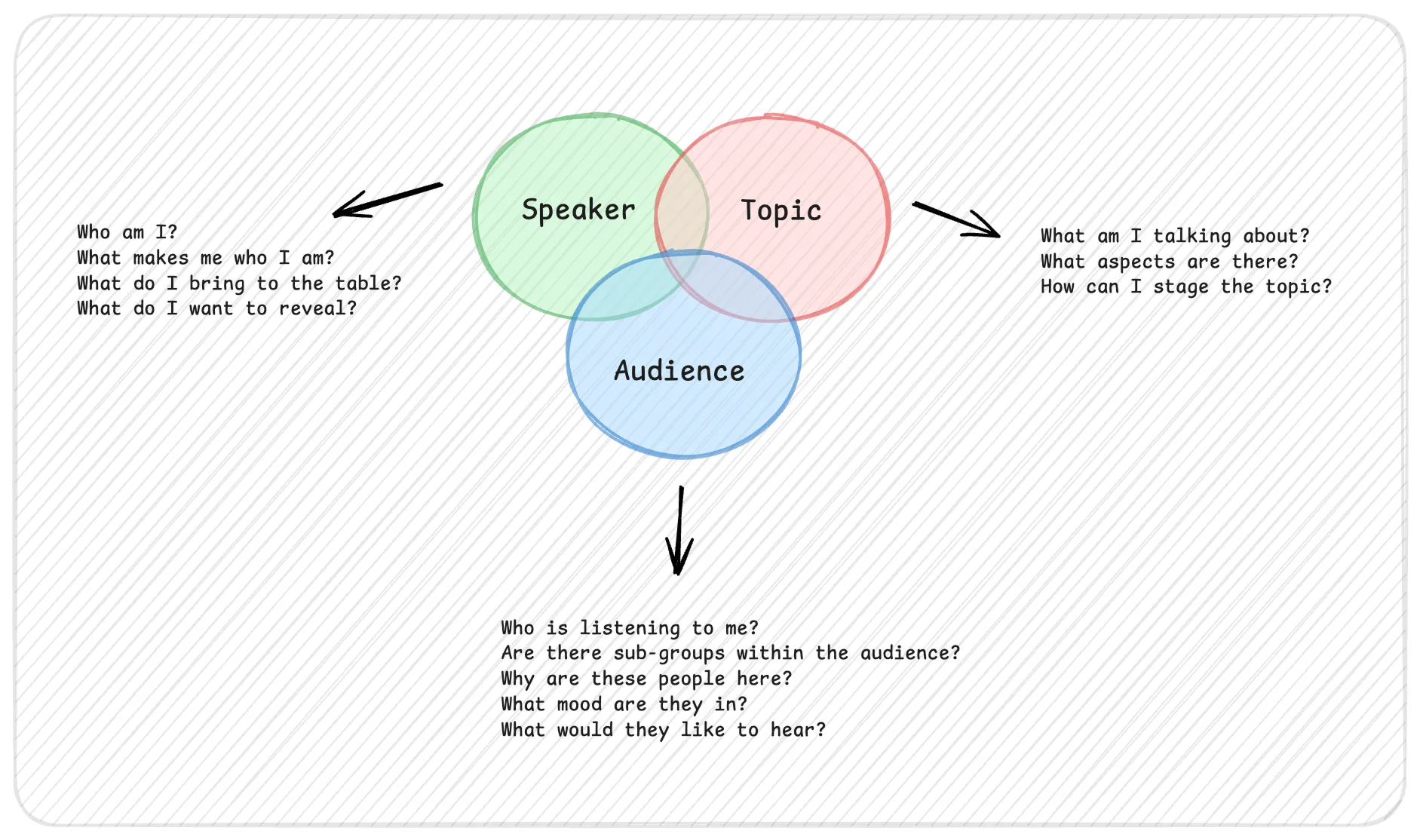
One of my problems has always been that I almost completely overlooked my audience. Of course I can adjust my speech depending on to whom I am addressing, but I never thought about it in a structured way. And if I learnt something in the workshop is that audience awareness is crucial.
For example, it is always really interesting to know how many distinct segments the audience comprises, and understanding that sometimes you must choose the right approach is essential. For example, you might acknowledge: “For some who aren’t familiar with this topic, it may feel challenging, but…” By doing so, you show empathy and adjust your communication style. The more emotionally engaged the audience becomes, the more you can vary your tone, narrative, or even the core angle of the topic, ultimately transmitting your message more effectively.
Each of these components influences and shapes the others, and understanding their interplay can transform a mere presentation into a memorable, persuasive experience. Let’s see how:
The connection of all three elements
-
At the Speaker-Topic intersection, the focus is on authenticity and personal relevance. The speaker reflects on why the subject matters to them, how their perspective has evolved, and what unique insights or expertise they can share.
-
At the Speaker-Audience intersection, it’s about understanding the people who are listening. The speaker considers what they share in common, what sets them apart, and how the audience’s existing knowledge and expectations shape the message.
-
At the Topic-Audience intersection, the goal is to bridge the subject matter with the audience’s interests, level of understanding, and emotional readiness. The speaker asks how much the audience already knows, what they’re hoping to learn, and how best to make the topic accessible and engaging.
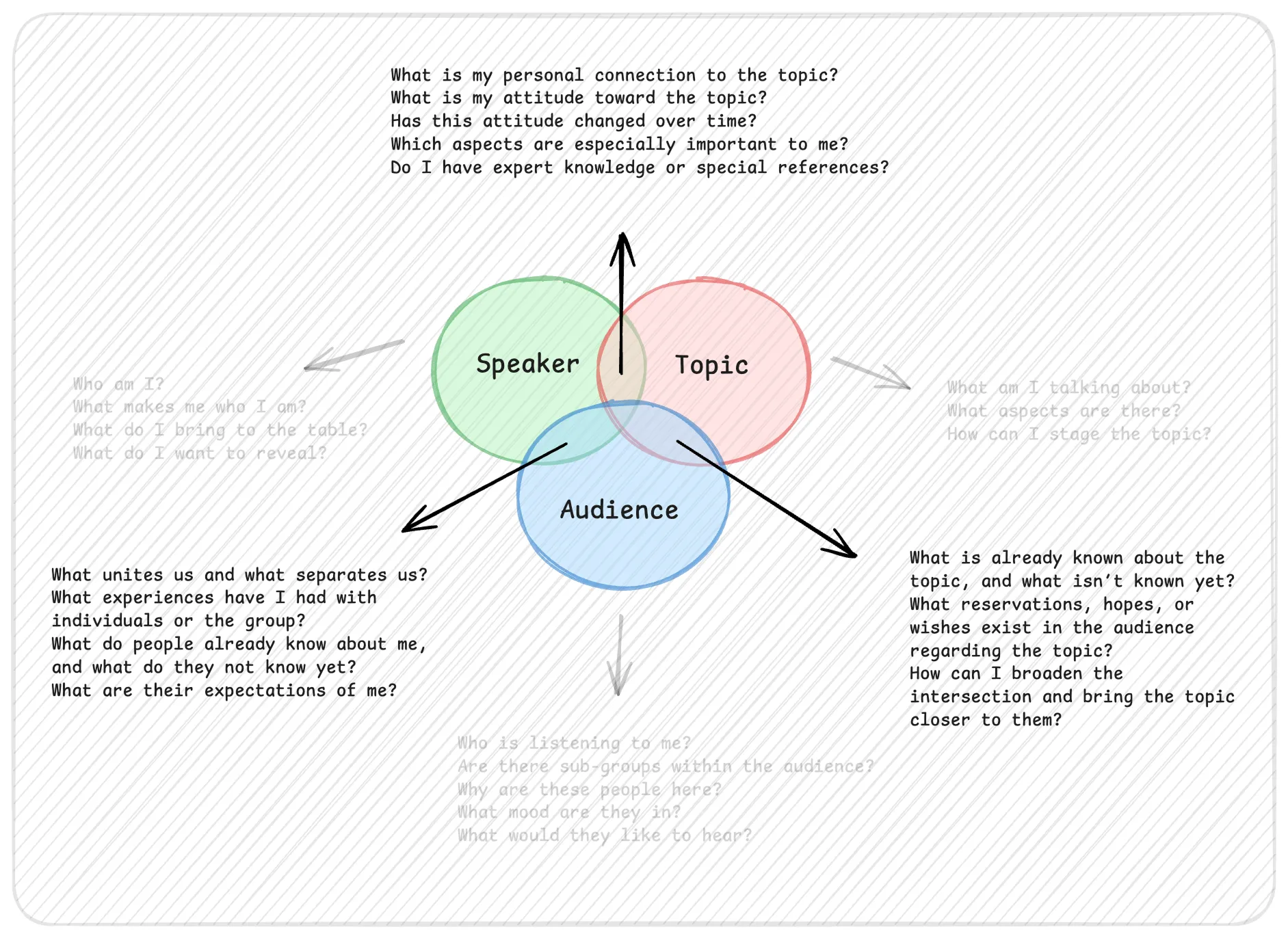
Having all these aspects in mind will help me create better presentations from now on, I am sure of that.
Where did that come from?
There is a book called Don’t Be Such a Scientist: Talking Substance in an Age of Style by Randy Olson, a marine biologist turned filmmaker. He argues that the key to effective communication is to engage the audience on multiple levels.
He introduces the concept of the “organs model” of communication, which is based on the idea that the brain is not the only organ that processes information. The model suggests that the most effective communication engages the brain, the heart, the gut, and even the lower organs.
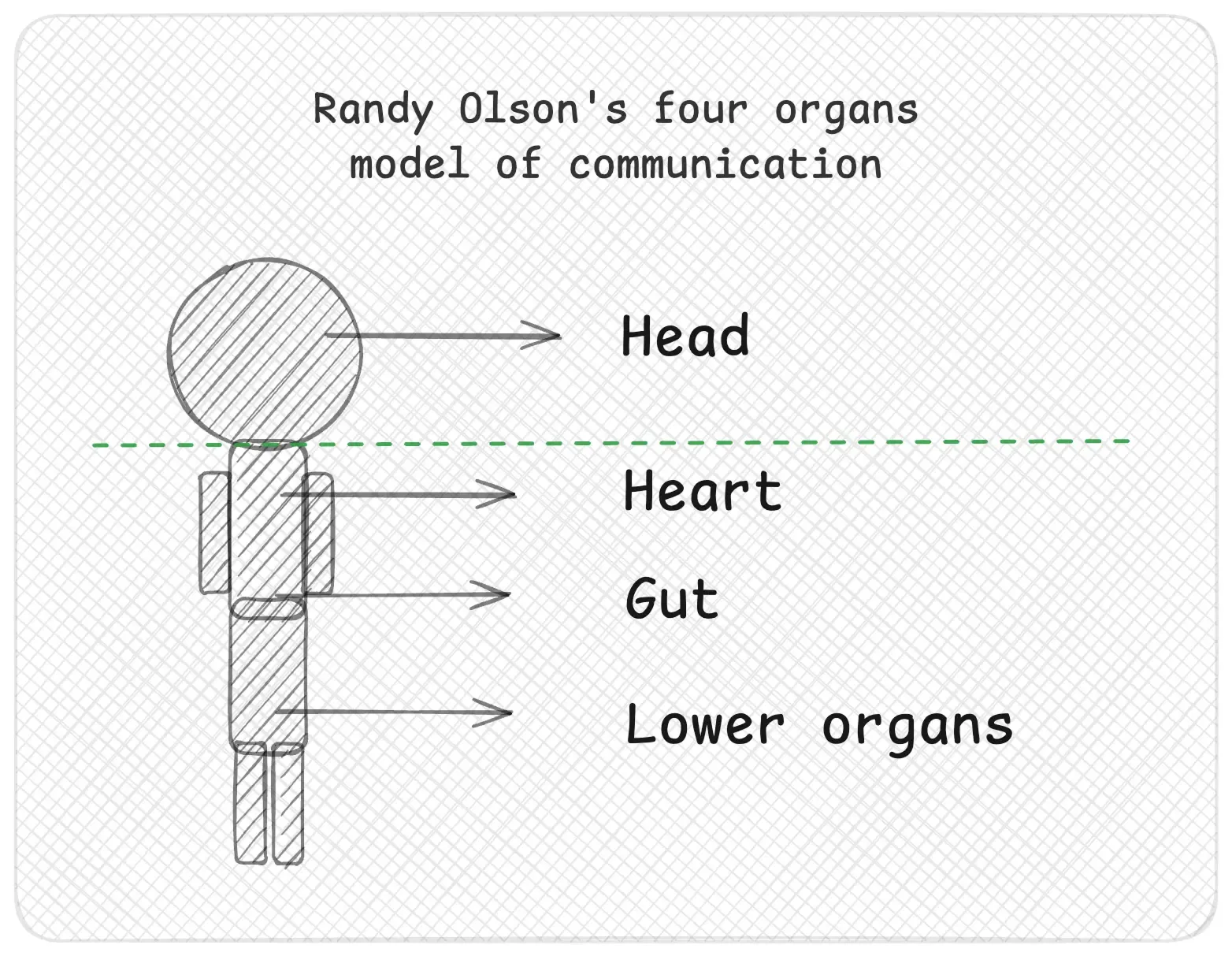
Let’s see what each organ represents:
-
Head: At the top is the realm of logic, facts, and arguments. This is where rational thinking and reasoned debate reside. When you communicate here, you appeal to people’s intellect—using data, clear reasoning, and logical structure.
-
Heart: Moving downward, the heart area stands for desires and passions. Communication at this level taps into emotions like love, enthusiasm, and personal longing. It goes beyond pure logic to inspire, motivate, and connect with the audience’s heartfelt wishes and values.
-
Belly: The belly zone represents instinct, humor, and even fear. This level of communication involves gut-level reactions—things that feel right or wrong without careful thought. Humor, anecdotes, and emotional tension often live here, influencing people through empathy, laughter, or anxiety rather than cold logic.
-
Lower Body: At the lowest level are deeper yearnings and strong desires—longings and drives that can be powerful, though not always rational. Communicating on this level involves tapping into fundamental human urges, needs, and cravings that often operate beneath conscious thought.
The following illustration summarizes very well what I just said:
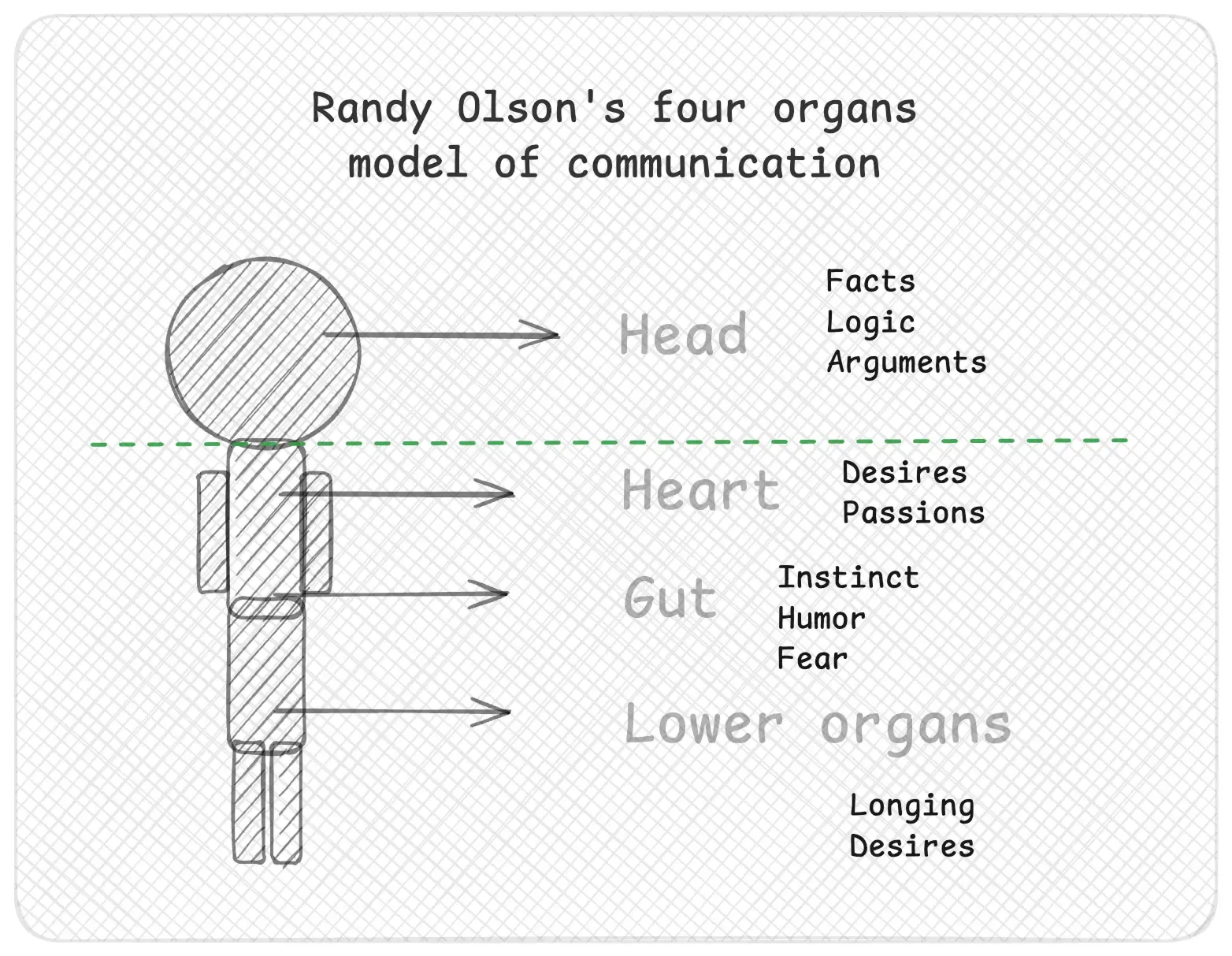
What I tend to do is stay in the head, focusing on the content and the logic of the argument, and since I use humor, I might also try to reach the gut. But I never thought about the lower organs.
According to Olson, to effectively engage a wide range of people, you must go beyond speaking to the intellect alone. Instead, connect through heartfelt sincerity and emotion, incorporate humor and intuition, and—when appropriate—add a dash of sensual appeal. In other words, stir interest and involvement using emotion, instinct, and desire, and then bring in the intellect to convey real substance.
Conclusion
I am really glad I attended this seminar. I have learned a lot about how to structure my presentations and above all I have the feeling I will think more about my audience and what I am saying in the future.
Thank you again, Christian Fremy, for the great insights!
FAQ about How To Present Like Steve Jobs
The three key elements are the Speaker, the Topic, and the Audience. By understanding the interplay between your own authenticity (Speaker), the relevance and meaning of your subject (Topic), and your listeners' expectations and background (Audience), you create a more impactful and memorable presentation.
Share article


